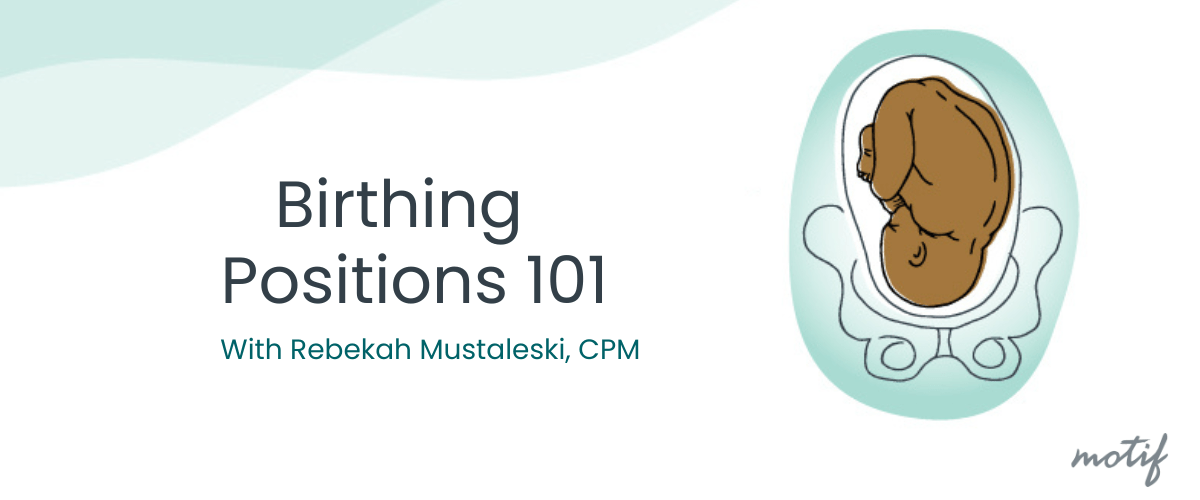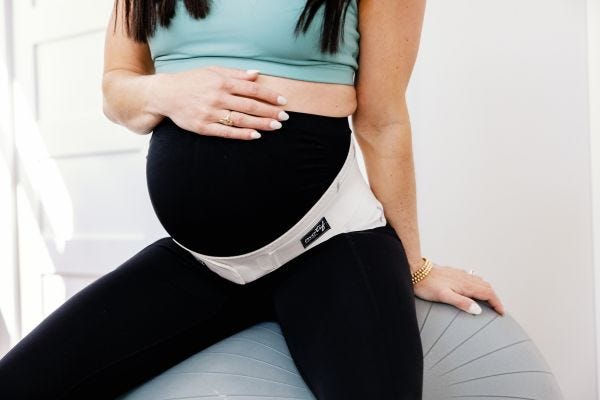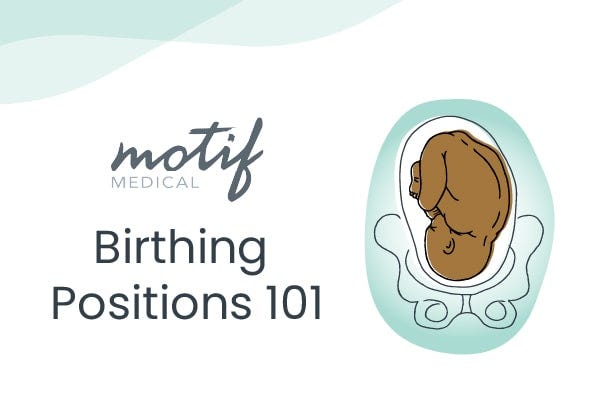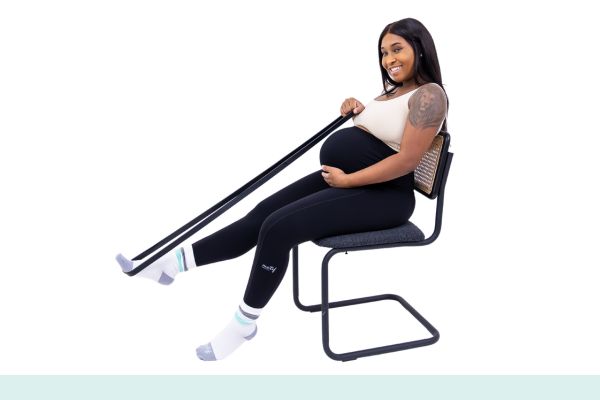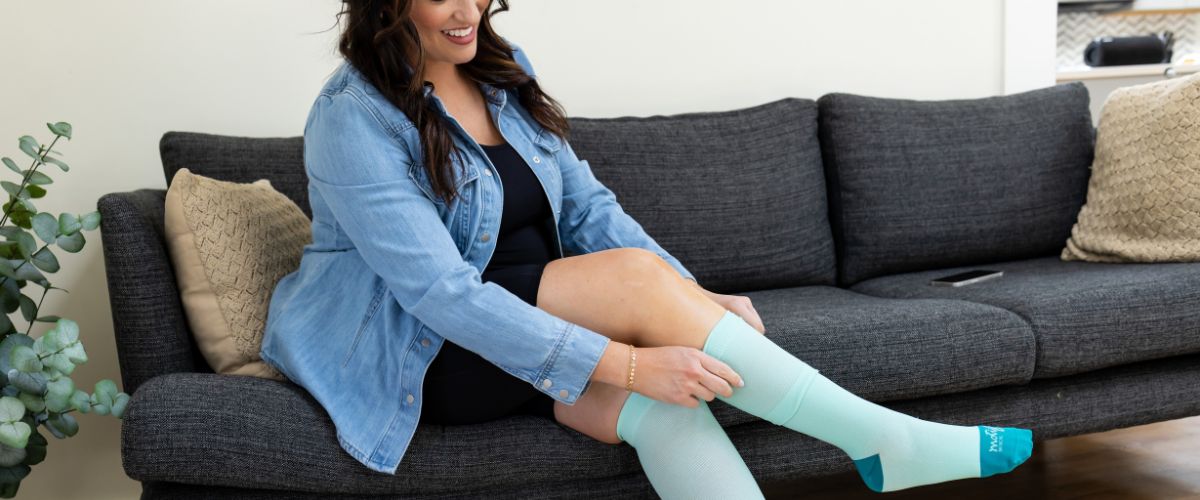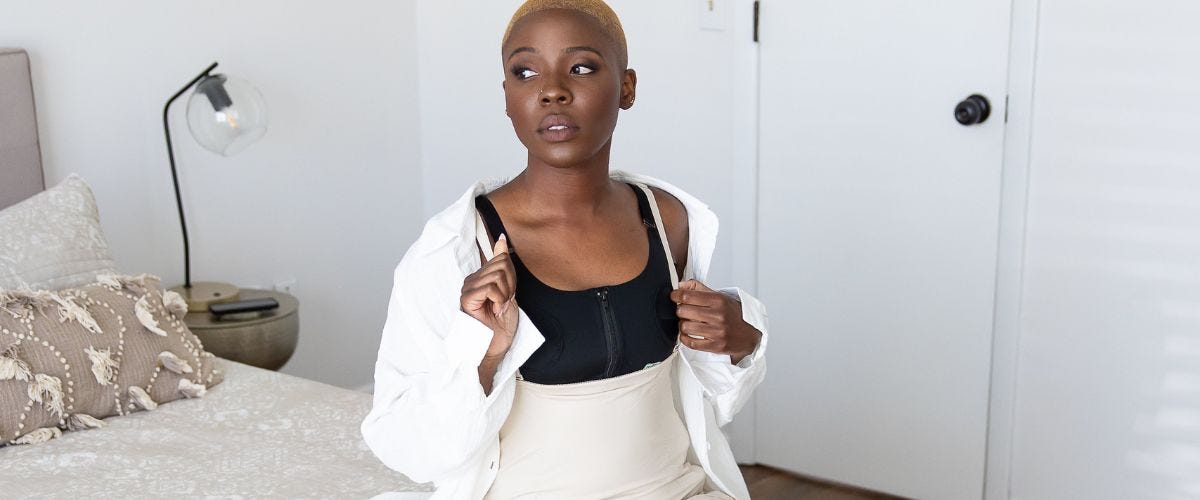Preparing for Your Big Day
When you are pregnant, there is often significant attention to helping you prepare for birth. You might attend a childbirth class and make a birth plan. You may have chosen your healthcare provider based on your birth experience preference. Some people also hire a doula to support them in the birth process. At some point in your pregnancy, someone will usually mention the baby’s part in your big day—finding the “optimal fetal positioning". Don’t be fooled by this term!
There is not only just one ideal position for your baby to be in. I often tell my midwifery clients the best position for their baby to be in is the one the baby used or chose to be born in. Many factors influence the position your baby is in when you get closer to your estimated due date: the structure of your bony pelvis, any tightness or restrictions in your pelvic floor, the location of your placenta, your daily posture and movement habits, and more throughout your weeks of pregnancy! So you can see, this is not going to be as straightforward as some people try to make it. Let’s explore various maternal positions to provide you with a better understanding when professionals discuss this information.
Understanding Your Pelvis
First let’s talk about the terms you’ll probably hear the doctor or midwife say! You may have heard of terms like like Occipito-Anterior (OA) and Occipito-Posterior (OP) in checkups when detecting the baby’s position.
Occiput: This is the bone on the back of your baby’s head
Anterior: This refers to the front of your body
Posterior: This refers to the back of your body
And just a reminder: when someone is talking about the baby’s position, they’re talking about what part is going into the pelvis first.
Next, let’s talk about the bony part of the pelvis—your pelvic bones. Everyone’s pelvis is shaped a little differently and if you’ve ever been injured and broken part of your pelvis, that will also affect your pelvic shape. There are three levels of the pelvis that are discussed in relation to birth and they are the inlet, the mid-pelvis and the outlet. What’s important to know about those for baby’s position is that the inlet and outlet are widest side to side and the mid-pelvis is widest front to back. The baby’s head is widest from the forehead to the occiput (back of the head), so as baby is working their way down and out, they are going to be turning to navigate through those pelvic levels.
Birthing Positions 101
Right/Left Occiput Transverse (ROT or LOT)
The first position I want to talk about is Right/Left Occiput Transverse (ROT or LOT). In this position, the baby’s chin is tucked to their chest so that the bone at the back of their head is the part entering the pelvis first (occiput). The left side or right side descriptor is telling you which side the head is angled toward—either the left or the right of the pregnant mom. This position is really common when the baby’s head is still high in the pelvis because remember: the pelvis is often widest side to side at the inlet! So most babies will be in an LOT or ROT position before they are engaged in the pelvis.
Left/Right Occiput Anterior (LOA or ROA)
Then, as a baby moves lower in the pelvis and birth canal, they will rotate to a Left/Right Occiput Anterior position (LOA or ROA). This is particularly true as the top of their head gets closer to the mid-pelvis. Here, the the left/right descriptor tells you if the baby’s head is angled to one side or the other in the birthing person’s pelvis.
This is a very common position for babies to be once their head is “engaged” or if your baby has “dropped.” Most female pelvis’ are wider from front to back in the middle level of the pelvis, so as baby gets lower in the pelvic bones, they turn their head so that the widest part is passing through front to back.
Left/Right Occiput Posterior (LOP or ROP)
Sometimes babies keep their backs toward the birthing person’s back in a posterior position. If their spine is lined up with your spine, that’s called “direct OP” (occiput posterior). But more commonly, their back will be shifted to one side or the other. This would be a Left/Right Occiput Posterior position (LOP or ROP). The head still fits well through the midpelvis like this, but occiput posterior positions often lead to more back pain for the one in labor. If you think about the shape of your spine, there’s a curve in your lower back. This is the start of your sacrum and when baby is posterior, the hardest part of their head (the occipital bone) is pressing against your sacral bone. It’s uncomfortable! Doing pelvic tilts or pelvic rocking, having someone provide counter pressure, or using upright positions and forward leaning positions can help encourage baby’s back to come around to the front.
Mentum
All of the above birth positions are common positions for baby to be in as you get closer to birth and while you’re in labor. Less commonly, the baby doesn’t tuck their chin to their chest before they drop down into the pelvis, and that can lead to a “mentum” position, where the baby’s chin is the first part presenting in the pelvis.
This is a rare presentation and your provider will talk you through delivery options if your baby is in this position during labor.
Breech
Finally, some babies don’t get into a head down position before birth and so their bum is the first part presenting into the pelvis. This is called a “breech position” and your provider will discuss this with you as you get closer to your estimated due date. While it’s not uncommon for babies to be breech early in pregnancy, only 3-4% of babies are breech at term, so this isn’t something many families have to consider. Sometimes longer, more painful vaginal births and even caesareans result from “mal-position”. And if your experience, it can be helpful to reach out to others who experienced this different presentation for support.
Touching Baby: What Position Is Your Baby In?
Have you tried to figure out what position your baby is in? Some people are really in tune with their baby’s movements and find it easy to identify positioning, but for most of us, it takes practice! You can start by taking a little time each day and feeling around to see what you notice. While you’re doing this, pay attention to where you feel baby movements in your body and see if you can differentiate between baby’s big movements and little movements. When you’re ready, lie down and imagine you have a large plus sign drawn on your abdomen, centered on your belly button. This will divide your belly into 4 parts.
Start in one of the top sections and feel around. Do you feel a firm bulge there? Is this a place where you usually feel strong kicks? If you feel a bulge, it’s probably your baby’s bottom, but if this is where you generally feel strong kicks, this is probably where your baby’s legs are. Sometimes you can even feel baby’s knees or feet moving around while your pressing! Feel the other upper part of your belly—you should feel whichever part you didn’t feel on the first side.
Next feel the lower parts. One side will probably have little flutters and punches from baby’s arms and hands—this should happen on the same side that you feel the big kicks on top. The other lower side will be the baby’s shoulder and back. If you feel in the middle, you might be able to feel baby’s head. It is firm, like a softball and usually bounces away from the pressure.
It can be helpful to look at a baby doll or download this baby positioning chart to help you figure this out the first few times you try it. And be patient! This is definitely a skill and you’ll get better and better the more you do it.
In closing, I want to reassure you that there isn’t one “good position”. The best one for your baby to be in is the one that they use to find their way through the pelvis. What you can focus on is creating balance and space in your pelvis, pelvic floor, and all of the other ligaments and muscles in the area so that your baby has the ability to get into whatever position they need. Given the space and the time your baby will find their way—just like the rest of us do!
Information provided in blogs should not be used as a substitute for medical care or consultation.


